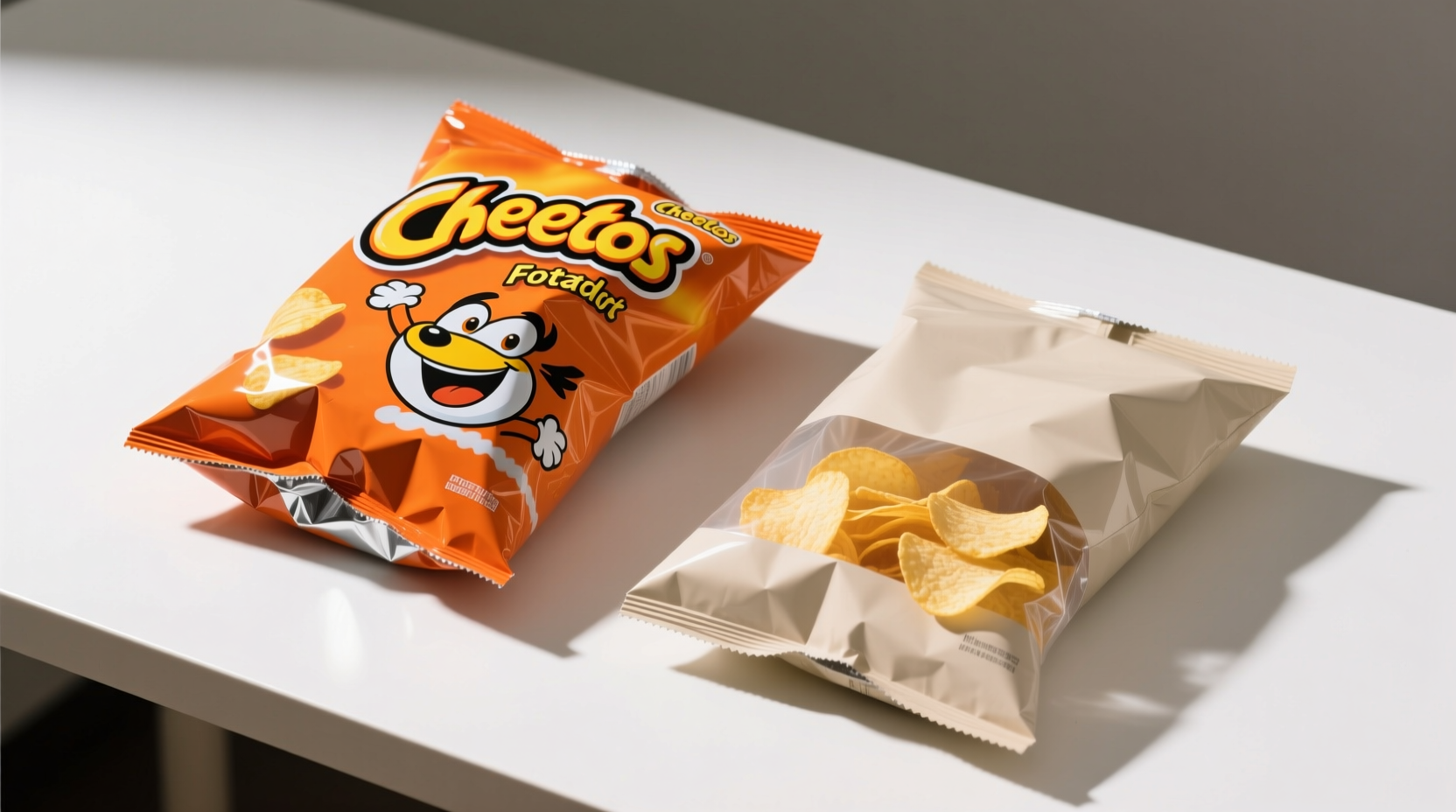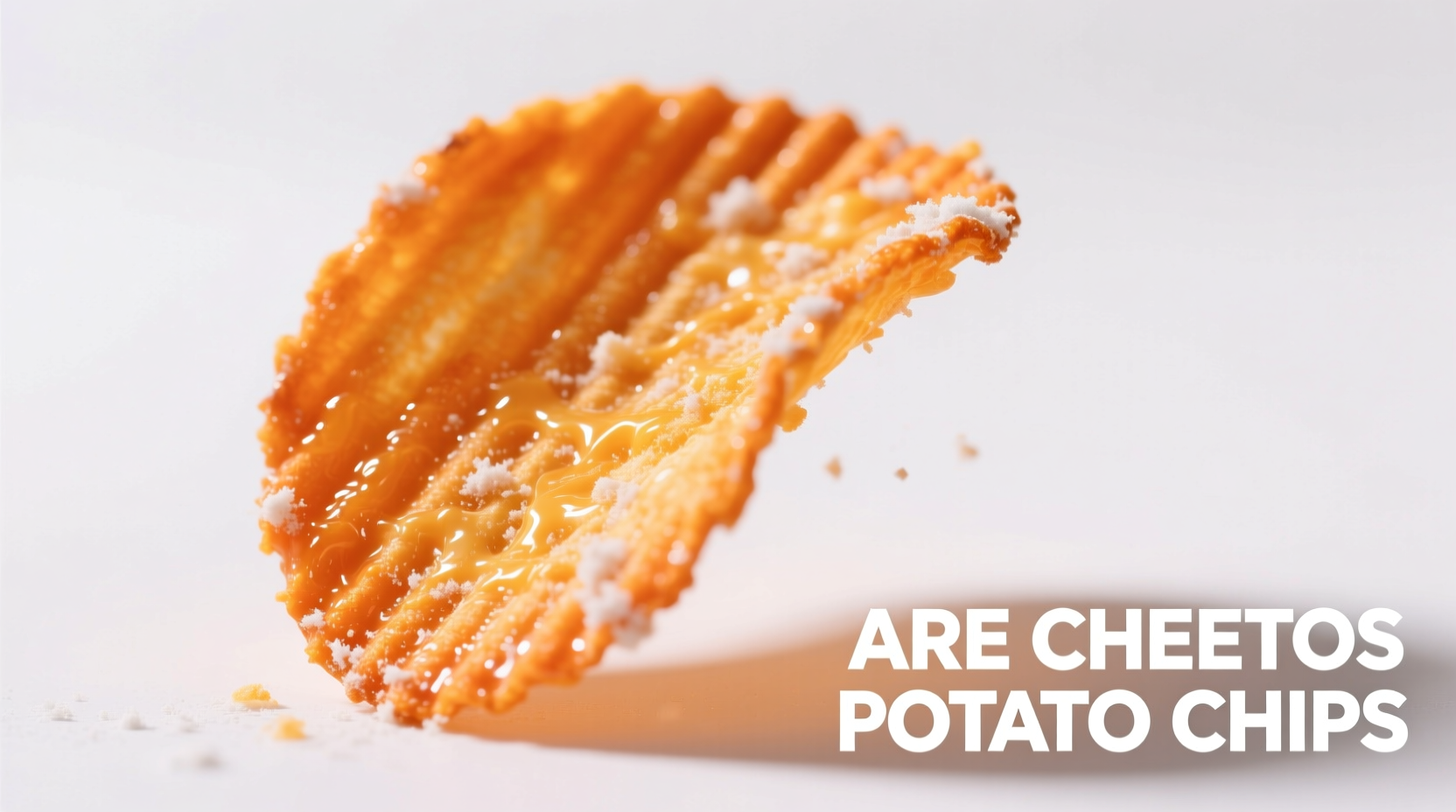The Core Ingredient Difference: Corn vs. Potatoes
When examining are cheetos potato chips, the most critical factor is ingredient composition. According to Frito-Lay's official ingredient list, Cheetos primarily contain:
- Cornmeal (the base ingredient)
- Vegetable oil (for frying)
- Cheddar cheese seasoning
- Salt and other flavorings
Traditional potato chips, by contrast, begin with potatoes as their primary ingredient—either sliced directly from whole potatoes or made from reconstituted potato flakes. The U.S. Food and Drug Administration (FDA) defines potato chips as products made from potato-based ingredients, which excludes corn-based snacks like Cheetos.
| Product Type | Primary Ingredient | Manufacturing Process | FDA Classification |
|---|---|---|---|
| Cheetos | Cornmeal | Extruded, puffed corn dough | Cheese-flavored corn snacks |
| Traditional Potato Chips | Potatoes | Sliced and fried potatoes | Potato-based snack food |
Historical Development: How Cheetos Came to Be
Understanding what are cheetos actually made of requires examining their history. Cheetos were invented in 1948 by Frito-Lay employee Charles Elmer Doolin, who developed the extrusion process that creates their distinctive puffed shape. Unlike potato chips—which date back to 1853 with George Crum's creation—Cheetos were designed as a completely different snack category.
The manufacturing process for Cheetos involves:
- Creating a cornmeal dough
- Extruding the dough through dies to form shapes
- Puffing the shapes using high heat
- Coating with cheese seasoning
This extrusion method differs fundamentally from potato chip production, which typically involves slicing, frying, and seasoning whole potatoes.

Regulatory Distinctions: Why Labeling Matters
The difference between cheese puffs and potato chips has regulatory implications. The FDA's food labeling requirements mandate that products accurately represent their primary ingredients. Since Cheetos contain no potato content, they cannot legally be marketed as potato chips.
This distinction matters for consumers with specific dietary needs:
- People with potato allergies can safely consume Cheetos
- Those following potato-free diets (like certain paleo variations) can include Cheetos
- Consumers seeking authentic potato flavor will find Cheetos deliver a different taste profile
Consumer Perception vs. Reality
Despite the clear ingredient difference, consumer confusion persists about is cheetos a potato chip brand. A 2023 survey by the Snack Food Association found that 42% of respondents incorrectly believed Cheetos contained potato ingredients. This misconception likely stems from Cheetos' placement alongside potato chips in snack aisles and their similar crunchy texture.
Food science explains why these products feel similar despite different bases:
- Both undergo high-heat frying processes
- Similar oil absorption creates comparable mouthfeel
- Shared seasoning profiles (salt, cheese flavors) mask base ingredient differences
Practical Implications for Snack Selection
Understanding why aren't cheetos considered potato chips helps consumers make informed choices:
- Cooking substitutions: Cheetos won't work as potato chip replacements in recipes like casseroles or toppings
- Nutritional differences: Corn-based snacks typically have different carbohydrate profiles than potato-based ones
- Allergen considerations: Those avoiding nightshade vegetables (like potatoes) can safely eat Cheetos
When reading snack labels, look for the first ingredient listed—that's your clearest indicator of what type of snack you're actually purchasing. For authentic potato flavor and composition, choose products where "potatoes" appear as the primary ingredient.











 浙公网安备
33010002000092号
浙公网安备
33010002000092号 浙B2-20120091-4
浙B2-20120091-4